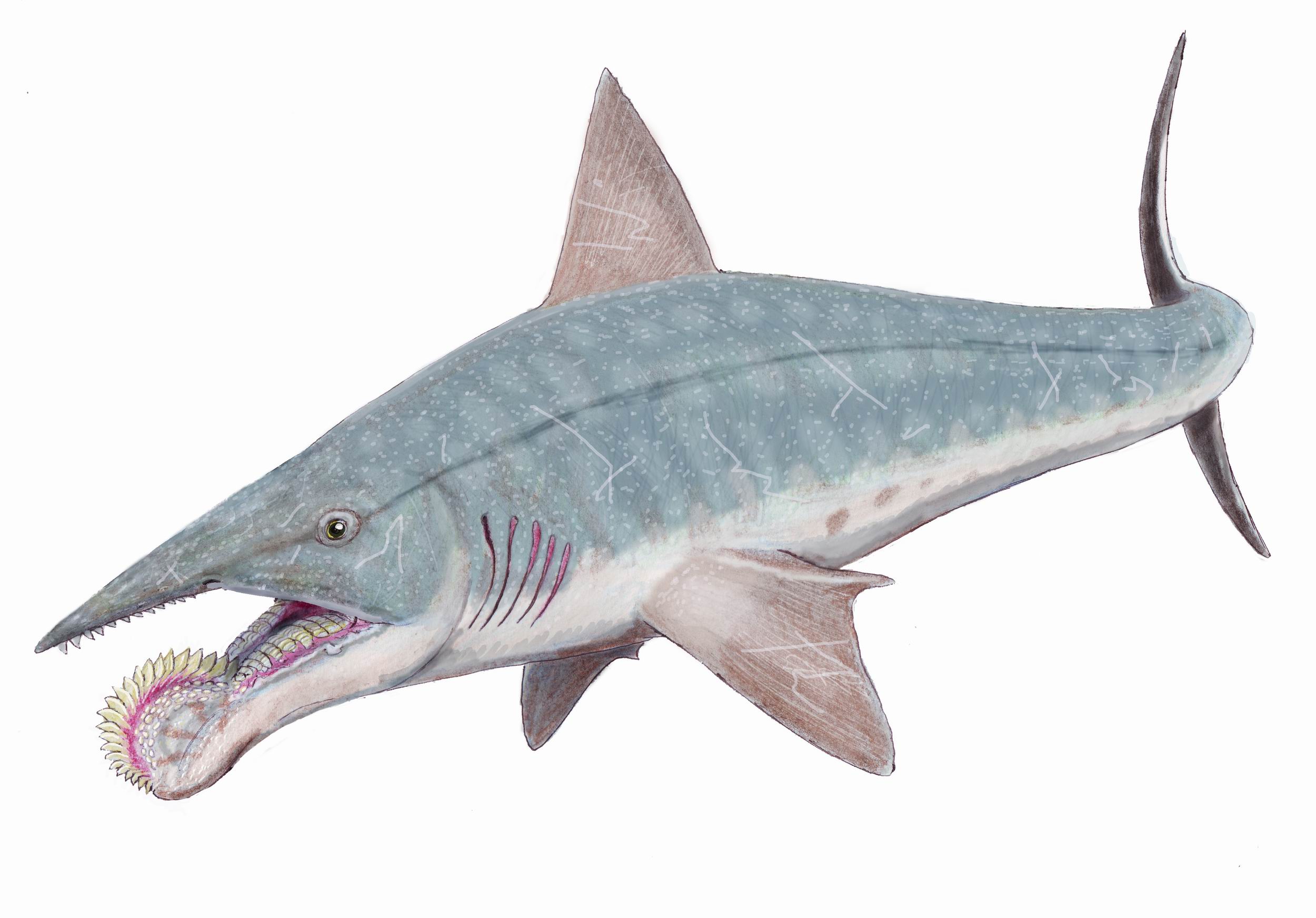Helicoprion << HEE lih KOH pree ohn >> is a prehistoric sharklike fish known for its spiral-shaped jaws. Fossils of Helicoprion consist only of spiral-shaped “tooth whorls” about 10 inches (25 centimeters) in diameter and including up to 170 teeth. Paleontologists (fossil scientists) have long struggled to understand how Helicoprion’s unusual jaws functioned.

Fossils of Helicoprion are found at sites in Australia, China, Russia, and several locations in western North America. The fossils date from about 290 million to 250 million years ago, near the end of the Permian Period. Like modern sharks and rays, Helicoprion had a boneless skeleton made of tough, elastic cartilage, which does not readily fossilize. From the size of the fossils, paleontologist estimate that Helicoprion grew from 13 to 25 feet (4 to 8 meters) in length. The fish may have weighed 500 to 1,000 pounds (225 to 450 kilograms).
The Russian geologist Alexander Karpinsky discovered the first fossils of this fish in the Ural Mountains in 1899. He gave the creature the name Helicoprion. The name comes from the ancient Greek words meaning spiral saw. Karpinsky thought the fossil was the coiled shell of a kind of prehistoric mollusk (shellfish) called an ammonite. However, he later realized the spiral-shaped fossil was a jaw lined with teeth resembling those of a primitive shark. His reconstruction of the creature’s anatomy placed the tooth coil above a short snout. Other scientists thought that the fused coil of teeth may have served as a protective structure positioned on the fish’s back.
Paleontologists have since discovered that Helicoprion’s tooth coil rested inside its lower jaw. They think that Helicoprion snagged soft-bodied prey, such as squid, with its sharp, projecting teeth. Prey were pushed back by the tooth coil and swallowed as the fish closed its jaws. New teeth continuously grew into place by uncoiling from behind to push out older teeth or replace lost teeth.
Paleontologists have long believed that Helicoprion was a primitive member of the shark family. However, scientists now think that Helicoprion is more closely related to a group of fish called chimaeras and ratfish. This group diverged from sharks around 400 million years ago. Helicoprion became extinct around 250 million years ago.
Helicoprion belongs to the class Chondrichthyes, which includes sharks, rays, and other cartilaginous fish. Helicoprion is a genus, a group of closely related species. The best-known species is Helicoprion bessonowi.
